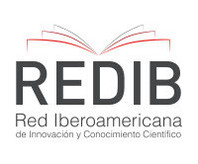The importance of urban green areas for the health of the population in the metropolitan area of Monterrey
DOI:
https://doi.org/10.29105/contexto19.29-481Keywords:
City and health, association of public space design with prevalence of metabolic syndrome, usability index of urban green areasAbstract
In the article are analyzed the relationship between the design of urban green areas (AVU) and human health, first offering an analysis of the literature that has investigated this relationship and that highlights the importance of their adequate provision for health, as well as the problems associated with the disuse of public spaces (poverty, inequality) and that ends up resulting in the loss of health in communities. The hypothesis that there is a causal correlation between the provision, distance and design of the AVU with the prevalence of metabolic syndrome among populations is tested. An AVU usability index is developed that integrates factors of provision, distance and urban design to rate the AVUs of the metropolis; the data is integrated at the municipal level to prove a causal relationship between the low usability of the AVU with an increase in the prevalence of metabolic syndrome. It is noted that this correlation is visible in the metropolitan area of Monterrey (AMM). The importance of urban design as a means to increase community health is highlighted.Downloads
References
Acosta Montes, J.; Hernández Cadena, L.; Barraza Villareal, A.; Jiménez Corona, A.; Cortez Lugo, M. (2014). Exposición atmosférica a ozono y riesgo de síndrome metabólico en una cohorte de adolescentes obesos. Ciudad de México, Instituto Nacional de Salud Pública.
Achor, M., Benítez, C., Brac, E. & Barslund, S. (2007). “Obesidad infantil”. Revista de Posgrado de la Vía Cátedra de Medicina. Vol. 168, núm. 37.
Archer, M.; Bhaskar, R.; Collier, A.; Lawson, T. y Norrie, A. (1998). Critical Realism: Essential Readings. Abingdon, Nueva York, Routledge.
Arellano, E. (2016). Propuesta para la evaluación de calidad de áreas verdes para la región metropolitana. Santiago de Chile, Maval.
Arsentales, V., Tenorio, M., & Bernabé, A. (2019). “Asociación entre actividad física ocupacional y síndrome metabólico: Un estudio poblacional en Perú”. Revista chilena de nutrición, Vol. 46, núm. 4, pp. 392-399.
Barquera, C., Rivera, D., Campos, N., Hernández, B., Santos-Burgoa Z., Durán, V. & Hernández, Á. (2010). Acuerdo Nacional para la Salud Alimentaria Estrategia contra el sobrepeso y la obesidad (ANSA). México.
Bentley, I. y otros (1999). Entornos vitales. Hacia un diseño urbano y arquitectónico más humano. Barcelona, Gustavo Gili.
Cartwright, N. (1989). Nature’s Capacities and their Measurement. Oxford, Oxford University Press.
Castro, S. (2005). “Evaluación de un índice para valorar las áreas verdes urbanas: su aplicación y análisis en la localidad de barrio del Escalante con una perspectiva geográfica”. Reflexiones. Vol. 84, núm. 1, pp- 107-125.
Chan, M. (2010). La planificación urbana esencial para la salud pública. Ginebra, Suiza, Centro de prensa Organización Mundial de la Salud.
Charles, A. (2020). Viola Juárez la ley; permuta área verde. El Norte, Local. 05 de Marzo. https://www.elnorte.com/viola-juarez-la-ley-permuta-area-verde/ar1889372.
Chen J-C, Schwartz J. (2008). Metabolic syndrome and inflammatory responses to long-term particulate air pollutants. Environ Health Perspect. Mayo, Vol. 116, no. 5, pp. 612–617.
Cruz, L. (2009). Obesidad en niños que cursan la educación básica en la comunidad de Zaragoza Ver. Monografía. Xalapa, Universidad Veracruzana, Facultad de Trabajo Social.
Danermark, B.; Ekström, M.; Jakobsen, L. & Karlsson, J. C. (2002). Explaining Society. Critical Realism in the Social Sciences. Londres, Routledge.
Egorov, A. I.; Mudu, P.; Braubach, M. y Martuzzi, M. (eds.) (2016). Urban green spaces and health. Copenhague, WHO Regional Office for Europe, 2016.
Fitzpatrick, K. & LaGory, M. (2013). Unhealthy Cities: Poverty, Race, and Place in America. New York, Routledge.
Garza , G. (2009). “El proceso de metropolización de Monterrey / hay que planear a largo plazo”. DemoS, núm. 007, pp. 17-18.
Gehl, J. (2006). La humanización del espacio urbano, la vida social entre los edificios. Barcelona, Reverte.
Gené Badia J. (2019). Perfiles de soledad y aislamiento social en población urbana. Atención primaria; APRIM-1680. Barcelona, Elsevier
Gibson, C., Cintron, M., Dawkins, M., & Asanaeyni, G. (2012). “Addressing obesity: Fear of crime, perceptions of disorder and disparities in child and adolescent use of public parks”. Journal of Applied Research on Children: Informing Policy for Children at Risk, Vol. 3, núm. 1, pp. 1-28.
Gómez, N. y Velázquez, G. (2018). “Asociación entre los espacios verdes públicos y la calidad de vida en el municipio de Santa Fe, Argentina”. Cuadernos de Geografía: Revista Colombiana de Geografía. Vol. 27, núm. 1, pp. 164-179. doi: 10.15446/rcdg.v27n1.58740.
Gutiérrez, M., Carhuamaca, L., Sanchez, E., Porta, A., y Andrinolo, D. (2016). “Expresión del síndrome metabólico frente a factores ambientales”. Acta bioquímica clínica latinoamericana, Vol. 50, núm. 4, pp. 745-752. http://www.scielo.org.ar/scielo.php?script=sci_arttext&pid=S0325-29572016000400023&lng=es&tlng=es.
Hernández, F. (2023). “Venta de vivienda en Monterrey crece 9% en el 2T2023”. Centrourbano, Sección Vivienda, Agosto 18. En línea: https://centrourbano.com/vivienda/venta-vivienda-monterrey-2t2023/
INEGI (2020). Censo de Población y Vivienda 2020. México, INEGI.
Jiang, B., Zhang, T., y Sullivan, W. C., (2015). “Healthy Cities: Mechanisms and research questions regarding the impacts of urban green landscapes on public health and well-being”. Landscape architecture frontiers, Vol. 3, núm. 1, pp. 24-35.
Lang, K. (2012). “Parents of Obese Children and Charges Of Child Abuse: What Is Our Response?” Pediatric Nursing, Vol. 38, núm. 6, pp. 337-340.
Lynch, K. (1971). The image of the city. Cambridge, Mass, MIT Press.
Macías Tomei, C. (2009). “Sindrome metabolico en ninos y adolescentes”. Archivos Venezolanos de Puericultura y Pediatría, Vol. 72, núm. 1, pp. 30-37. http://ve.scielo.org/scielo.php?script=sci_arttext&pid=S0004-06492009000100006&lng=es&tlng=es.
Macías de Tomei, C. (2014). “Sindrome metabólico en niños y adolescentes: Qué hay de nuevo?” Anales Venezolanos de Nutrición, Vol. 27, núm. 1, pp. 96-100. http://ve.scielo.org/scielo.php?script=sci_arttext&pid=S0798-07522014000100014&lng=es&tlng=es.
Manzanilla- Quiñones, U.; Manzanilla- Quijada, G. y Delgado-Valerio, P. (2021). “Análisis espacial de áreas verdes urbanas”. Ecosist. Recur. Agropec. Vol. 8, núm. 1, e2676, https://doi.org/10.19136/era.a8n1.2676
Mata, E. (2019). Caracterización y evaluación espacial de las áreas verdes urbanas en el municipio de Apodaca, N.L. México, Universidad Veracruzana.
Maxwell, J. A. (1996). Qualitative Research Design. An Interactive Approach. Applied Social Research Methods Series. Vol. 41. Thousand Oaks, California, Sage Publications.
Maxwell, J. A. (2004). Using Qualitative Methods for Cau- sal Explanation. Field Methods. Vol. 16, no. 3, pp. 243-264. https://doi.org/10.1177/1525822X04266831.
Medina, C., Jáuregui, A., Campos, I., & Barquera, S. (2018). “Prevalencia y tendencias de actividad física en niños y adolescentes: resultados de ENSANUT 2012 y ENSANUT MC 2016”. Salud Pública de México, Vol. 60, núm. 3, 263-271.
Moreno Altamirano, L. & García J. (2014). “Epidemiologia y determinantes sociales asociados a la obesidad y la diabetes tipo 2 en México”. Revista Médica del Hospital General de México, Vol. 77, pp. 86-95.
Narváez-Tijerina, A. (2020). “Nuevas perspectivas para construir ciudades para la vida y la salud”. Investig. segur. soc. salud; Vol. 22, núm. 1, pp. 4-15.
Organización Mundial de la Salud (OMS) (2012). Health Indicators of sustainable cities in the Context of the Rio+20 UN Conference on Sustainable Development. Ginebra, Suiza, OMS.
Parra-Heredia, J. D. (2016). Realismo crítico: una alternativa en el análisis social. Sociedad y Economía. Vol. 31, pp. 215-238. http://www.redalyc. org/articulo.oa?id=99647007010
Rodríguez-González, J. y Narváez-Tijerina, A. (2020). “Ciudad y salud: consecuencias del déficit de áreas verdes recreativas. El caso del AMM”. Memoria del IV coloquio internacional de las culturas del desierto, UACJ, pp. 141-142.
Rojas-Martinez, R. et al., (2021). “Tendencia en la prevalencia de síndrome metabólico y sus componentes en adultos mexicanos, 2006-2018”. Salud pública Méx [online]. Vol.63, núm. 6, pp. 713-724. https://doi.org/10.21149/12835.
Ruiz, C.; Gaona, E.; Méndez, I.; Cuevas L.; Gómez, L.; Jiménez, M.; Romero, M.; Hernández, M.; Kuri, P. y Shamah, T. (2017). Encuesta Nacional de Salud y Nutrición de Medio Camino 2016. México, Instituto Nacional de Salud Pública.
Russo, A. y Cirella, G. (2018). “Modern Compact Cities: How Much Greenery Do We Need?” Int J Environ Res Public Health. Oct 5; Vol. 15, núm. 10, pp. 2180. doi: 10.3390/ijerph15102180. PMID: 30301177; PMCID: PMC6209905.
Salmon, W. C. (1984). Scientific Explanation and the Causal Structure of the World. Princeton, Princeton University Press.
Sayer, A. (1992). Method in Social Science: A Realist Approach. 2nd ed. Londres, Routledge.
Scott, D. (2007). Resolving the Quantitative-Qualitative Dilemma: A Critical Realist Approach. International Journal of Research & Method in Education, Vol. 30, no. 1, pp. 3-17. https://www.tandfonline. com /doi /abs/10.1080/17437270701207694
Scott, D. (2014). Ontology, Epistemology, Strategy and Method in Educational Research. A Critical Re- alist Approach. magis, Revista Internacional de Investigación en Educación. Vol. 7, no. 14, pp. 29-38. http://revistas.javeriana.edu.co/index. php/MAGIS/article/view/11853/pdf_1
Tacq, J. (2011). Causality in Qualitative and Quantitative Research. Quality & Quantity. Vol. 45, no. 2, pp. 263-291. https://doi.org/10.1007/s11135-009-9293-0
Viloria, M., Cadavid, L. y Awad, G. (2018). “Metodología para evaluación de impacto ambiental en proyectos de infraestructura en Colombia”. Ciencia e Ingeniería Neogranadina. Vol. 28, no. 2, pp. 121-156.
Vaughan, D. (2009). Analytic Ethnography. P. Hedström & P. Bearman (eds.). The Oxford Handbook of Analytical Sociology, pp. 688-711. Oxford, Oxford University Press.
Downloads
Published
How to Cite
Issue
Section
License
Copyright (c) 2025 Dr. Adolfo Benito Narváez Tijerina, Jessica Jazmin Rodríguez González

This work is licensed under a Creative Commons Attribution-NonCommercial 4.0 International License.
The authors who publish in this journal accept the following conditions:
1. The authors keep the copyright and give the journal the right of the first publication, with their content registered under the Creative Commons License, which lets third parties to use the published material as long as they mention the authors and the first publication from the journal.
2. The authors can make other independent and additional contractual agreements for the non-exclusive distribution of the version of the article published in the journal (for example an institutional repository or a book) provided that they explicitly mention that the content was first published in CONTEXTO. Revista de la Facultad de Arquitectura de la Universidad Autónoma de Nuevo León..














.png)





